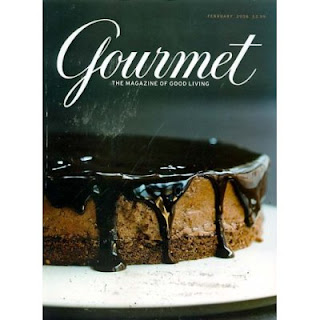A long time ago I worked at a major national magazine.
I don’t want to mention its name, but it’s a synonym for “humans.” It was owned
by a big corporate entity. I won’t mention its name either, but it rhymes with
“crime stink.”
I hated working there. It was big, corporate, ridiculously WASPy, and predominantly male at a time when magazine
publishing was already overrun by women. No one said what they meant. They all seemed to use
a language they learned at prep school or at college “in Connecticut,” as they
would say. It took me months to figure out they meant Yale, and not Wesleyan or
Fairfield.
But a few good things did come out of my mostly miserable
five years there. I made more money than I would have made anywhere else. I
learned that there were still people in the world – the New York City publishing
world! – who were anti-Semitic. And, most importantly, I met my dear friend
Bryce. Of course, Bryce didn’t actually work at Crime Stink, since he wasn’t a
wealthy twit who went to college “in Connecticut.” He was the account guy at
our ad agency, and I was his client. That meant he was supposed to toady to me
and take me out for fancy dinners and tell me I was always right. But he wasn’t
very good at his job, I guess, because I don’t remember any toadying or
fancy dining or complimenting. He did, however, recover my sofas (brilliantly!),
because he wanted to practice his recently acquired reupholstering skills, and
he danced with me at corporate parties (those Crime Stink guys did not acquire
any dancing skills in prep school), and he made me laugh with killer imitations of the
Connecticut lockjaw with which my colleagues spoke.
 |
| Provence |
But most relevantly (I have a point here, I promise), he went
to cooking class with me. Once a week, for several months, he would tell
the folks at his agency he was going to see the client and I would tell my
people at “Humans” that I was going to the agency and we would sneak off to a
little cooking school downtown for a Provençal cooking class, where we
learned to make yummy things like tapenade, ratatouille, tarte au citron, and killer aioli. And
wonderful pissaladiere, the Provençal onion tart that makes ordinary pizza
look pale.
Pissaladiere is believed to have been introduced to Provence
by Roman cooks way back in the fourteenth century. The name probably comes from
the Latin “piscis” (fish), which became “pissalat” via “peis salat” (“salted
fish” in the dialect spoken in Nice). Traditionally, the dough is thicker than
classic pizza dough, but you can make it with whatever works for you: your own
pizza dough, store-bought pizza dough, or pâte brisée. The traditional topping is
caramelized onions, olives, and anchovies, although I sometimes add garlic and crumblings
of chevre to the mix. You can certainly personalize yours, but try the original
at least once. It really is something perfect, and perfectly delicious.
Pissaladiere
If you use purchased pizza dough, this is a very easy dish
to make. But it does take about an hour for the onions to cook down. You need
to stir occasionally, but not more than a few times during that hour, so you
don’t need to pay close attention.
Ingredients
Your favorite pizza dough or purchased dough
2 lb. thinly sliced onions
a few sprigs of fresh rosemary or thyme, or both
salt and pepper
¼ cup olive oil
about 16 pitted black olives
about 10 anchovy filets
Directions
- Cook the onions with the olive oil and herbs for about 45 minutes, covered, then without the cover for about 10-15 minutes more, so they can dry out a bit. (You can make this the day before and keep covered and chilled.) I like to add a few whole peeled garlic cloves to the mix as well.
- Stretch the dough to fit whatever pan you’re using. The traditional shape is a rectangle about the size of a baking sheet but you can use a pizza pan if you prefer.
- Spread the onions over the stretched dough; make a design of the anchovies and olives. If you’re adding some crumbled cheese, now’s the time.
- Bake at 400 degrees for about 25 minutes.
- Slice and serve.

























